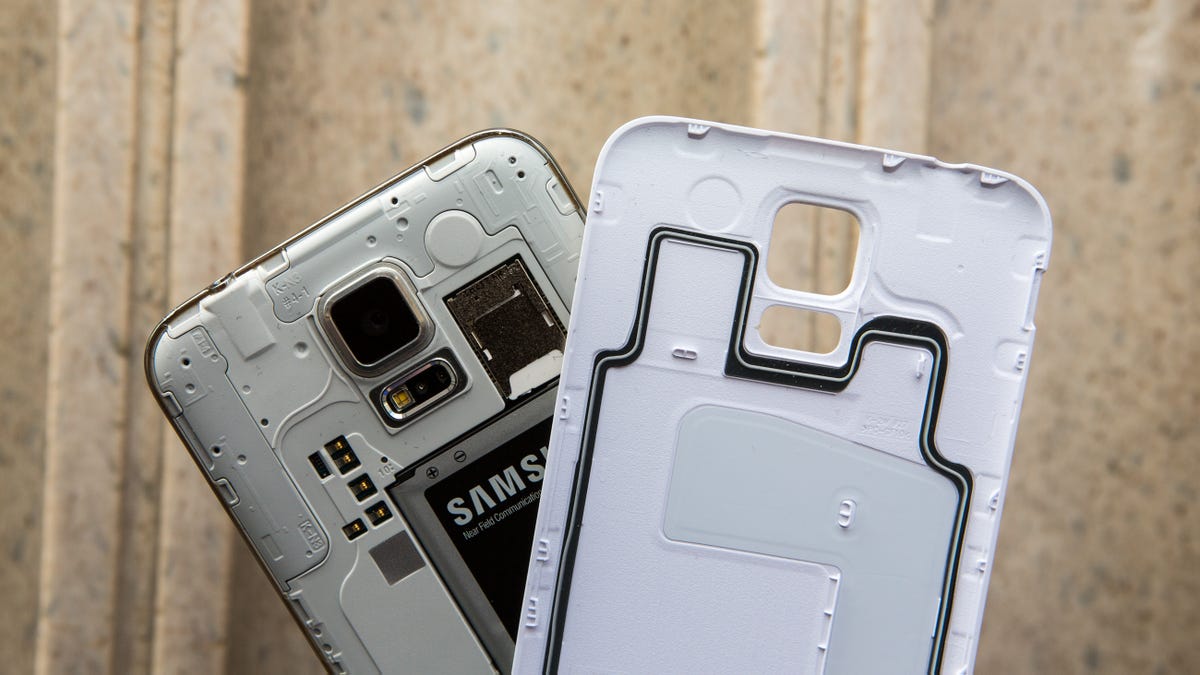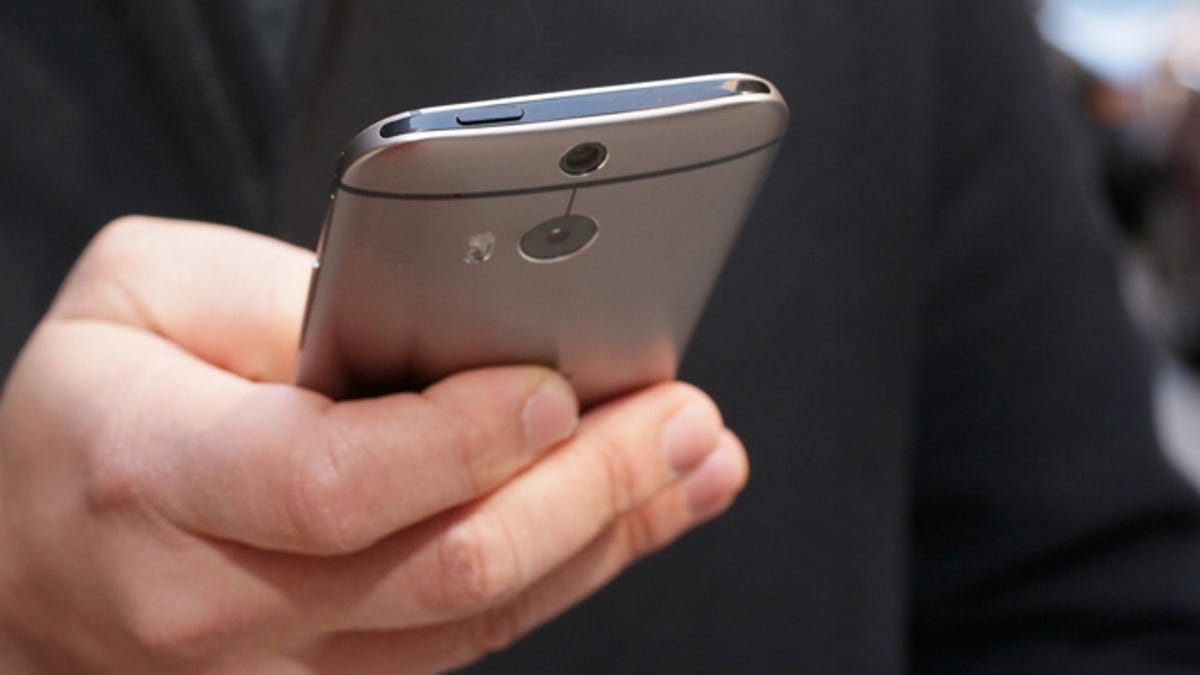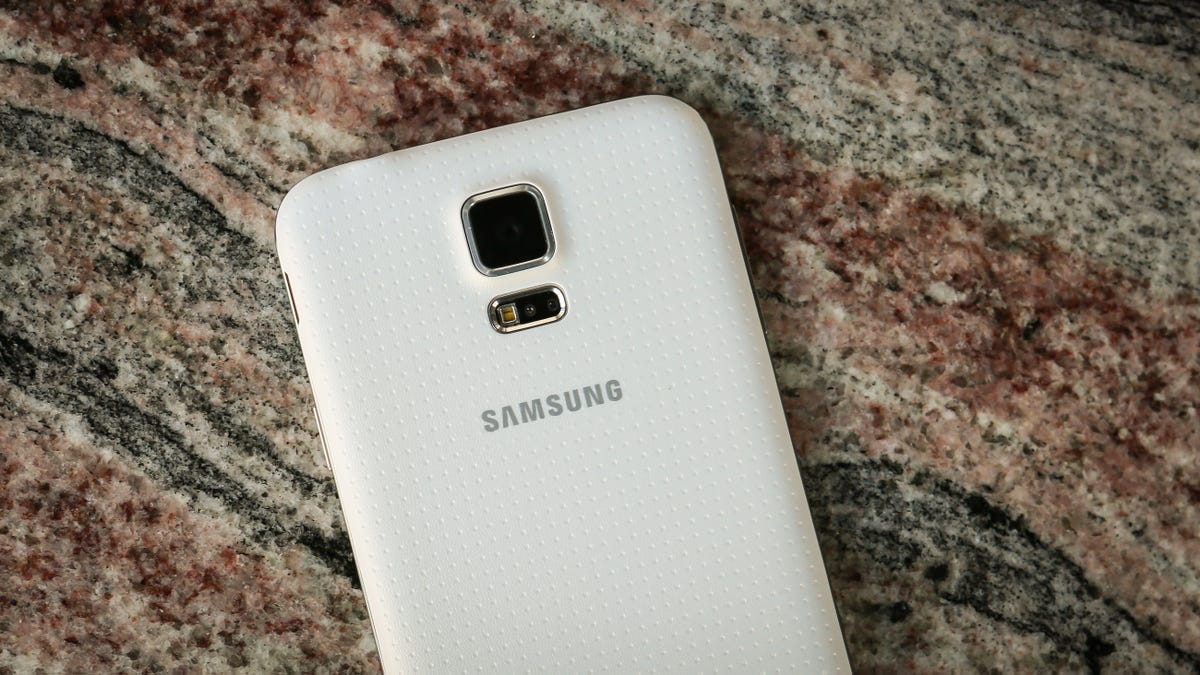
Sarah Tew/CNET
Around six months ago, long before the Samsung Galaxy S5 was officially unveiled, rumors started kicking around that it would have aluminum body. The thinking was a) in order to differentiate the S5 from the S4, Samsung should make the new model swankier and b) true flagship models like the iPhone 5S and HTC One — and the now the HTC One M8 — should feature sleek metal “unibody” designs, not “cheap” plastic bodies.
Thankfully, it didn’t happen.
While Samsung switched from a smooth, glossy plastic back to a dimpled one, we didn’t get aluminum, titanium, magnesium, or some other exotic metal. Nor did we get a curved display. In fact, the S5 isn’t so different from the S4. Sure, the screen’s a touch larger and the processor, battery life, and camera have been slightly upgraded while a fingerprint sensor and some water resistance have been added.
In short, you’re looking at subtle improvements rather than “massive innovation” — or so says CNET’s Jessica Dolcourt in her full review of the S5 .
As bland as that sounds, it’s not a bad thing, especially when you consider that the removable plastic back is one of the Galaxy line’s important selling points and one of the biggest reasons to buy a Galaxy instead of an iPhone.
For starters, the removable back gives you access to the battery, so you can replace it when it stops holding its charge like it used to. Or you can carry around an extra battery to swap in case you run out of juice.


Sarah Tew/CNET
True, an embedded battery does have its benefits. It allows designers to slim devices down those extra few millimeters (see Dolcourt’s ” It’s time to kiss the removable smartphone battery goodbye“) and embedded batteries typically offer longer “useful life” over time.
For instance, according to the folks at batteriesinaflash.com, “Apple estimates that its sealed battery laptops only lose about 20 percent of their ability to hold a charge after 1,000 discharges of the battery.” The same site says that many laptops see a large dip in battery life after less than two years of use. The same holds true for smartphones with removable batteries.
But if anything goes wrong with your iPhone’s battery, you’re supposed to take it into an Apple Store or an Apple-authorized repair shop to get it replaced (Apple charges $79 for iPhone battery replacement and $100 for an iPad battery replacement) Meanwhile, I can pick up a new or spare S4 battery for around $11 or so online. Not bad.
The other plus to the S5’s removable back is the ability to access the memory expansion slot and add memory. As people use their phones to shoot more video — and watch more of it — your storage can dry up pretty quickly, especially if you have a bunch of games and photos on your device. There are plenty of cloud archiving options available, but I know plenty of frequent travelers who store dozens of movies on their phone’s memory card (don’t ask me where they get those movies).


Sarah Tew/CNET
Yes, HTC smartly added an “external” memory expansion slot to the One M8 (you could say it was really stupid not to have the slot in the original HTC One). In some ways, I prefer that easy-access design, but with the S5’s waterproofing feature, keeping the expansion slot tucked behind the removable back is the way to go.
Doing the math again, Samsung’s 64GB Pro Micro-SDXC card costs around $60 online. You can get a 16GB iPhone 5S for $199 with a contract — the same price as the 16GB GS5. But bumping up to the 64GB iPhone 5S will run you $399 (with a contract) or $200 more. You could pick up three 64GB cards for the same price.
With previous Galaxy phones, the removable back also tied into other accessories. You could swap in backs with integrated front covers, backs that left room for extended batteries, and a back that allowed for wireless Qi charging — to name a few. For most people, those options aren’t much of a selling point, but I expect we’ll see similar accessories for the S5.
In the end, the S5’s upgrades, like iPhone 5S’, may not seem terribly exciting. But at least Samsung didn’t sacrifice functionality and flexibility for swankier looks. That flexibility — the removable battery and expandable memory in particular — is ultimately what differentiates Samsung’s Android phones from Apple’s iPhones. And that’s why I’d never buy an Android phone that didn’t offer those features.


Now playing:
Watch this:
How Samsung built its Galactic Empire
4:07



